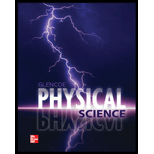
Concept explainers
To explain: The steps used to carry out an investigation using scientific methods.
Explanation of Solution
Introduction:
Investigation using scientific methods is a methodical approach to answer questions about various existing problems around us. It can be defined as a systematic process that involves observations, background researches, formulation, testing, and measurement or sometimes testing and modification of a hypothesis. Scientific methods of investigation are normally used to develop better models and explanations of the problems.
Scientific methods of investigation normally can be carried out in three steps.
Step one: Observation.
Firstly, in order to engage in scientific investigation, it is a good start to observe things and become inquisitive and try to confirm the idea about the observation.
Step two: Formulation of a question
The second step is to formulate a question and answer it measurably. Focusing on a good question is a good start.
Step three: Formulate a hypothesis
The next step is to articulate a hypothesis and answer the questions based on some previous research and background. It is a good attempt to state both hypotheses and resulting predictions which shall be tested.
Step four: Test the hypothesis by
In order to validate the predictions and whether the hypothesis is supported or not, it is necessary to do experiments. The experiments should be repeated in order to obtain accuracy.
Step five: Analysis of data.
After completion of the experiment, it is necessary to collect the data and analyze them in order to check whether the hypothesis is supported or not. In case, the results are varying then the experiments need to be repeated in a new way if required.
Step six: Communication of the results.
The results obtained needs to be communicated by publishing them in a scientific journal.
Conclusion:
Hence, the scientific methods of investigation can be summarized by the above-mentioned steps.
Chapter 1 Solutions
Glencoe Physical Science 2012 Student Edition (Glencoe Science) (McGraw-Hill Education)
Additional Science Textbook Solutions
College Physics
Essential University Physics: Volume 2 (3rd Edition)
An Introduction to Thermal Physics
College Physics: A Strategic Approach (4th Edition)
Essential University Physics (3rd Edition)
Physics (5th Edition)
 College PhysicsPhysicsISBN:9781305952300Author:Raymond A. Serway, Chris VuillePublisher:Cengage Learning
College PhysicsPhysicsISBN:9781305952300Author:Raymond A. Serway, Chris VuillePublisher:Cengage Learning University Physics (14th Edition)PhysicsISBN:9780133969290Author:Hugh D. Young, Roger A. FreedmanPublisher:PEARSON
University Physics (14th Edition)PhysicsISBN:9780133969290Author:Hugh D. Young, Roger A. FreedmanPublisher:PEARSON Introduction To Quantum MechanicsPhysicsISBN:9781107189638Author:Griffiths, David J., Schroeter, Darrell F.Publisher:Cambridge University Press
Introduction To Quantum MechanicsPhysicsISBN:9781107189638Author:Griffiths, David J., Schroeter, Darrell F.Publisher:Cambridge University Press Physics for Scientists and EngineersPhysicsISBN:9781337553278Author:Raymond A. Serway, John W. JewettPublisher:Cengage Learning
Physics for Scientists and EngineersPhysicsISBN:9781337553278Author:Raymond A. Serway, John W. JewettPublisher:Cengage Learning Lecture- Tutorials for Introductory AstronomyPhysicsISBN:9780321820464Author:Edward E. Prather, Tim P. Slater, Jeff P. Adams, Gina BrissendenPublisher:Addison-Wesley
Lecture- Tutorials for Introductory AstronomyPhysicsISBN:9780321820464Author:Edward E. Prather, Tim P. Slater, Jeff P. Adams, Gina BrissendenPublisher:Addison-Wesley College Physics: A Strategic Approach (4th Editio...PhysicsISBN:9780134609034Author:Randall D. Knight (Professor Emeritus), Brian Jones, Stuart FieldPublisher:PEARSON
College Physics: A Strategic Approach (4th Editio...PhysicsISBN:9780134609034Author:Randall D. Knight (Professor Emeritus), Brian Jones, Stuart FieldPublisher:PEARSON





